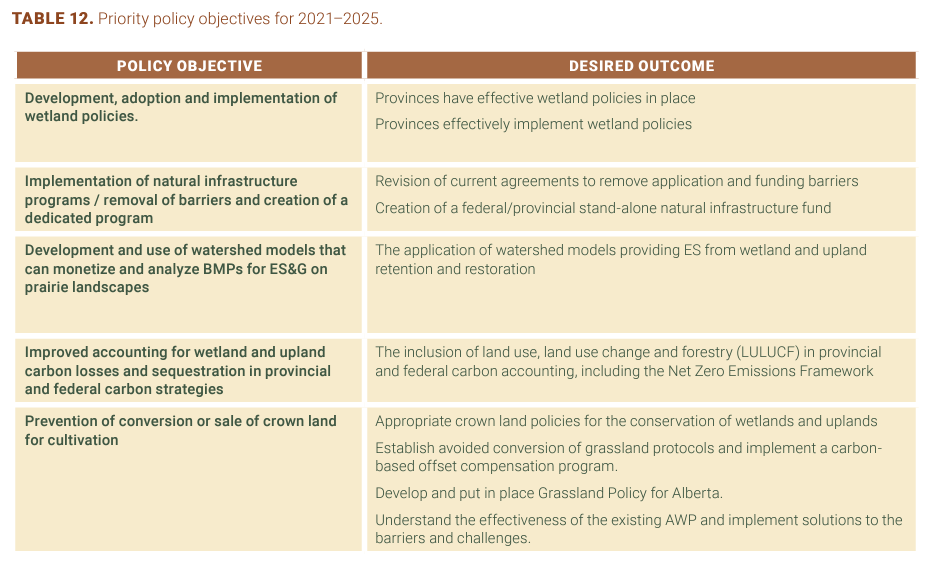In the PHJV, policy initiatives are activities undertaken by joint venture partners with the purpose of supporting government legislation, policies and programs that benefit wetlands and upland waterfowl habitat.
The PHJV Policy Committee encourages the development of programs and policies promoting the sustainable use of land, soil, and water resources across the Prairie Parkland Region and Western Boreal Forest. This is accomplished by actively supporting the work of provincial NAWMP implementation teams, encouraging interagency collaboration, and enabling knowledge and information exchange between provinces.

